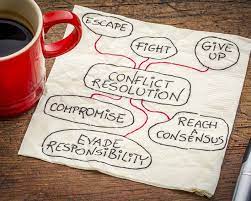I’ve been writing a series on the importance of systems thinking in buying and selling. A fundamental issue we have to understand is “What happens when two independent systems intersect and have to work together?”
As we, sellers, look at the various pieces parts of selling—marketing, sales, customer service, etc—we tend to optimize these systems to achieve our separate goals. We focus on our effectiveness, efficiency, and productivity in generating revenue.
Our customers have different systems–most are focused on accomplishing the objectives of their functional organizations and those of their enterprise. There are other “systems,” the way they identify and manage change, the way they identify and manage problems/opportunities. They may be less practiced with these, but they have these in place. And these may include buying, it they determine that is critical to their change management process.
As a result we and our customers have a huge challenge. We have completely separate systems, with very conflicting goals! It’s no wonder why we each struggle!
Our and our customers’ normal mode of operation is to smash these conflicting systems together, and we know how well that works.
We need to think about how we redesign this process to achieve our individual goals, while working together. Or better, how do we work to achieve shared goals? The good news, is we know that complex systems must be adaptive.
Since buyers don’t necessarily know or care about how our systems work, the onus is on sellers to figure this out. How do we adapt our systems to complement those of our customers, how do we help them adapt their systems in a way that we might more effectively help them achieve their goals.
But the design objective of their systems is not to help us generate revenue, but to focus on achieving their own goals.
As we look at modifying these conflicting goals and systems, there are some things to think about:
- Where/why do customers fail in their change management/problem solving processes? It’s important to note that I didn’t say, “How do we help our customers buy or decide?” It turns out that is the smallest component of where our customers fail–yet that’s what we focus on. So we are still in conflict.
- My friends Matt Dixon and Ted McKenna, present extensive research in The Jolt Effect, show us the biggest failure point is on deciding. Helping the customer overcome their fear of messing up, improving their confidence not in are they choosing the right vendor, but are they doing the right thing—again their focus is on their goals, their jobs, their business, and their success.
- My friends Hank Barnes and Brent Adamson have both studied decision regret. How do we help them not only do the right thing, but the decisions and choices they make are one’s in which they have great confidence.
- People like Morten Hansen have looked at the ability of organizations to successfully manage their own project success–whether they involve buying or not. There is huge failure rate in their ability to align around what they want to do and manage themselves, successfully through their project. So, even if we do the first 3 things well, with our customers, their project failure rate is so high, that if they don’t succeed with this, they and we fail.
- Finally, it’s a more pragmatic recognition of our goals–achieving our revenue goals–are only a result of the success the customer has in achieving their goals. That is helping our customers successfully navigate their process, making a consensus decision, and achieving their goals, is the only way we achieve our goals! Unless they succeed, we don’t!
As we look at this, we can see how, as sellers, we might redesign our own systems to be more complementary and aligned with our customer systems, than in conflict. There still needs to be alignment with each customer engagement, but we are starting from a different point that enables us to more easily and quickly align with the customer and how they get things done. It also enables us to reduce the conflict in our different systems–the systems become aligned around common goals.
Afterword: For those that want to follow the Business Acumen/Systems Thinking series, click on the link for the collection.

Amazing pov.